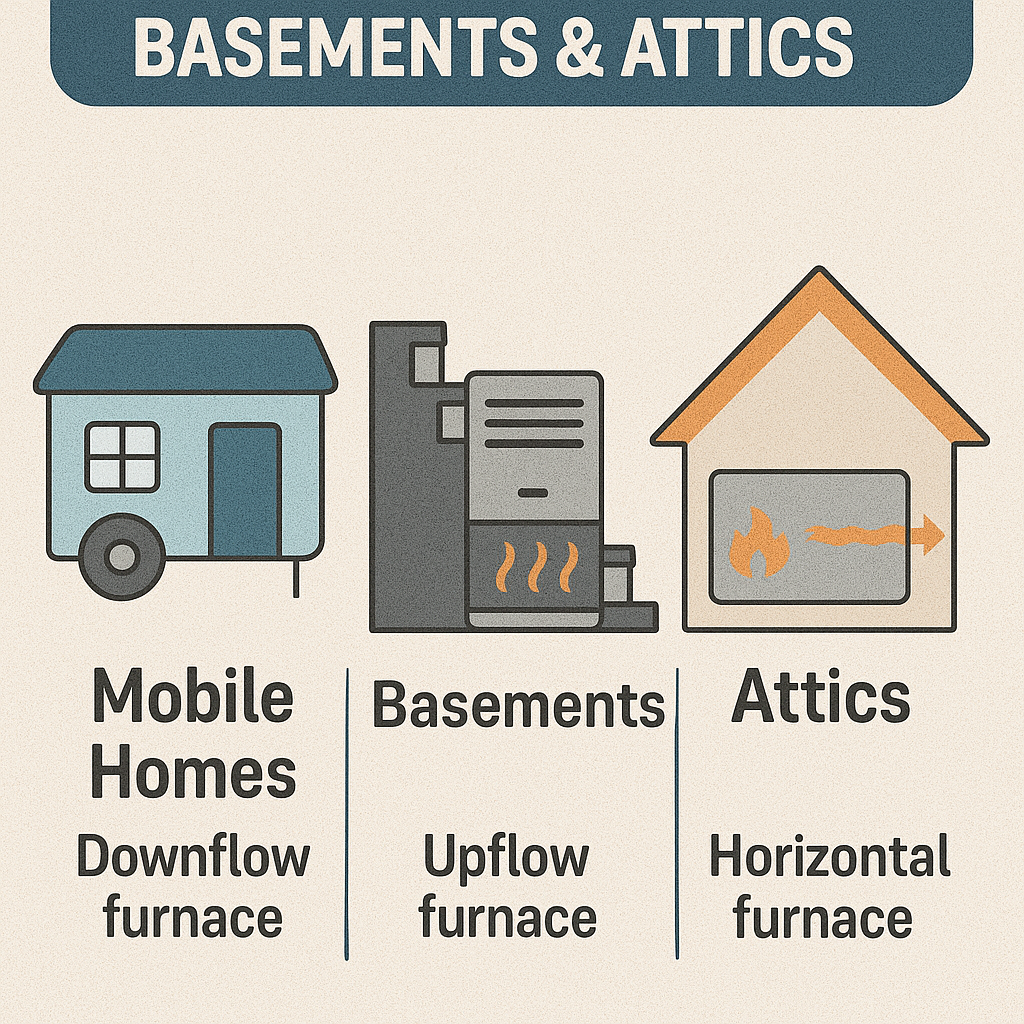Choosing a new furnace? The direction your unit moves air — up, down, or sideways — affects efficiency, comfort, and installation costs more than you might think. This quick guide helps you match the right furnace layout to your home’s structure.
What it is:
Air is pulled in from the bottom and pushed up into the ductwork.
Best for:
-
Homes with basements or crawlspaces
-
Vertical installations where ducts run above the unit
Pros:
-
Efficient heating for multi-story homes
-
Easier to install and maintain
-
Common in colder regions
Cons:
-
Requires enough vertical clearance
-
Not ideal for slab homes
Want a refresher on airflow direction? Here’s a simple layout explainer
⬇️ Downflow Furnaces
What it is:
Air enters through the top and is heated as it moves down into floor-level ducts.
Best for:
-
Homes on slabs, no basement
-
Attic installations where ducts are below
Pros:
-
Great for single-story homes
-
Easy duct access if furnace is in attic
Cons:
-
May require extra attic ventilation
-
Can be harder to service in tight spaces
See how downflow stacks up in horizontal installations
↔️ Horizontal Furnaces
What it is:
Lies on its side, moving air sideways from one end to the other.
Best for:
-
Mobile homes, attics, and crawlspaces
-
Anywhere vertical space is limited
Pros:
-
Flexible fit in tight spaces
-
Works with sidewall or ceiling ducts
-
Common in prefab or modular homes
Cons:
-
May need more installation finesse
-
Limited to specific home layouts
Want to see how horizontal furnaces save space? Check out this glossary guide
🧭 Quick Comparison Table
| Feature | Upflow | Downflow | Horizontal |
|---|---|---|---|
| Air Direction | Bottom → Top | Top → Bottom | Side → Side |
| Best For | Basements, vertical | Slabs, attics | Crawlspaces, tight areas |
| Ease of Access | Easy | Moderate | Moderate |
| Efficiency Potential | High | Medium | Medium–High |
🛠️ How to Choose the Right Orientation
Ask yourself:
-
Where are your ducts located — above or below the furnace space?
-
Do you have vertical clearance?
-
Will this go in an attic, basement, or crawlspace?
-
Does your home need a compact setup?
Still unsure? You may want to review our guide to special space installations.
❓ FAQs: Airflow Configurations
1. What happens if I install the wrong airflow type?
You could end up with poor airflow, uneven heating, and higher energy bills.
2. Can airflow direction affect efficiency?
Yes — upflow tends to perform best in multi-level homes.
3. Can horizontal furnaces heat a whole house?
Absolutely, if they’re correctly sized and installed.
4. Which configuration costs the most to install?
Horizontal units often require more duct modification.
5. Do I need a specific furnace for a mobile home?
Yes — you’ll want a horizontal or mobile-home-certified unit.
6. Is airflow layout more important than fuel type?
They go hand in hand — choose both based on your home’s setup.
🛒 Ready to Start Shopping?
Browse high-efficiency gas, electric, and dual-fuel furnaces for any space at
👉 The Furnace Outlet
Need help finding the right fit? Drop us a message—we’re happy to help.







